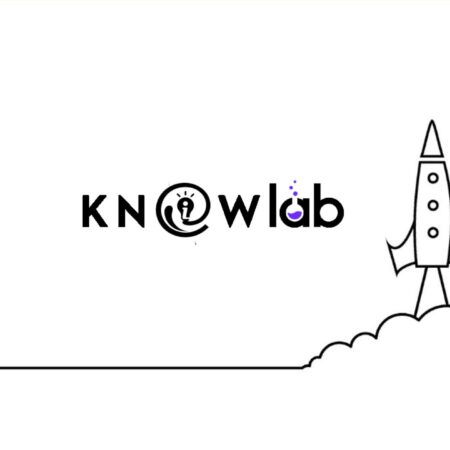 Climate changes is having a lot of attention in the last few years. The adverse effect is felt everywhere on earth. Since the glaciers are melting in the Arctic, the sea levels are rising. Cities are experiencing recurring floods, and deforestations keep on increasing.
Climate changes is having a lot of attention in the last few years. The adverse effect is felt everywhere on earth. Since the glaciers are melting in the Arctic, the sea levels are rising. Cities are experiencing recurring floods, and deforestations keep on increasing.
According to the NASA Technical Reports System (NTRS), the threat to climate change can be analyzed and leveraged through massive amounts of data. The real challenges lie in implementing those data from the vast datasets & deploying accurate reports.
A recent article from Forbes outlined how trending technology like data science and forecasting methods for predicting the future. And to add practical solutions to climate changes issues. IoT sensors chips can monitor the amount of energy to get consumed or wasted. By analyzing eaw, unstructured data to create actionable insights on renewable energy and wind turbines.
Introduction
Deadly climate changes is a prime issue worldwide. And to handle these issues, countries need to make new strategies. These should focus on real-time data. Big data and predictive analytics can provide accurate data using some of the advanced tools such as Global Forest Watch and Google Earth Engine.
There are advanced sensors based on IoT and other technologies for collecting data on various variables such as rain, soil, and forest cover. And collecting data on this helps in establishing the correlations between them and datasets. The causes are due to human activities such as deforestation, forest fires, and many more.
Many experts working in the High-End Climate and Extremes Project (HELIX) projects are trying to define the extreme futures of climate change. We may face 2, 4, and 6℃ warming in the near years that will lead to glacier melts will lead to rising sea levels and an increase in global warming. Declaring A Planetary Climate Emergency
Declaring A Planetary Climate Emergency

We are already too late to prevent some of the tipping points from happening. It will take nearly 30 years to achieve carbon neutrality. Minimizing the risk of climate change requires keeping global warming as close to 1.5 degrees.
By reducing carbon emissions to zero levels, is again the most challenging. And we are two to three decades away from declaring the planetary climate emergency.
Economics Prevailing
A recent UN report revealed that all the major countries like the United States, the United Kingdom, Russia, India, Australia, China, and others plan to produce 120% more fossil fuels by 2030. And they have also agreed to keep global warming to 1.5 degrees under the Paris climate agreement.
Though the governments are heavily dependent on the advice of economists, they ignore climate change in their research. However, no amount of economic cost-benefit analysis is going to save us from an existential threat to civilizations.
Frost Free Seasons is Going to Lengthen For More Than 8 Weeks

The duration of frost-free seasons has been increasing continuously for the last four decades affecting ecosystems and agriculture. In the future, heat-trapping gas is going to increase, leading to more frost-free seasons.
By the end of the century, the longest frost-free seasons will be longer than eight weeks. Precisely, in the elevation and coastal areas, the increase in heat-trapping gas emission will be smaller.
More Droughts and Heat Waves are Coming

Droughts and heatwaves have become more intense with rising temperatures and emission of heat-trapping gases. Summer temperature will rise and result in a reduction in soil moisture. And the worst part is we experience extreme days every two to three years worldwide.
Sea Level To rising Nearly 8 Feet by 2100

The global sea level has risen about 8 inches every year, and if it keeps rising, there would be nearly 8 feet rise by 2100. Floods will be everywhere. It will be the result of the melting of ice and the expansion of sea waters as it warms.
In the coming decades, storm surges and high tides will combine together and lead to sea-level rise and land subsidence for more flooding. With rising sea levels, water will continue to warm, and its volume will rise for many centuries to come. That will be more than in the last century.
Endpoints
With each new day, we are moving a step towards deadly climate changes. We are in a situation where we have already crossed some of the tipping points. Now we can’t prevent them from trying. The temperature rise will be leading to rising in global warming.
Heat-trapping gas emitted in the form of carbon dioxide from vehicles, chimney emissions are prime reasons. Heatwaves and droughts are more likely to form, and the temperature of seawater will keep rising. Melting glaciers will lead to a rise in sea level, and if it continues at the same pace, there will be no glaciers in the next few centuries in the arctic regions.
Reference Link-
- https://climate.nasa.gov/effects/
- https://www.nationalgeographic.com/science/2019/11/earth-tipping-point/
- https://www.intechopen.com/books/global-warming-impacts-and-future-perspective/study-of-impacts-of-global-warming-on-climate-change-rise-in-sea-level-and-disaster-frequency
- https://www.forbes.com/sites/forbesfinancecouncil/2019/09/06/climate-change-and-big-data-investing-for-a-solution/?sh=6b7635c863dd
Author Bio
 Senior Data Scientist and Alumnus of IIM- C (Indian Institute of Management – Kolkata) with over 25 years of professional experience Specialized in Data Science, Artificial Intelligence, and Machine Learning.
Senior Data Scientist and Alumnus of IIM- C (Indian Institute of Management – Kolkata) with over 25 years of professional experience Specialized in Data Science, Artificial Intelligence, and Machine Learning.
PMP Certified, ITIL Expert certified APMG, PEOPLECERT and EXIN Accredited Trainer for all modules of ITIL till Expert Trained over 3000+ professionals across the globe Currently authoring a book on ITIL “ITIL MADE EASY”.
Conducted myriad Project management and ITIL Process consulting engagements in various organizations. Performed maturity assessment, gap analysis and Project management process definition and end to end implementation of Project management best practices
Social Profile Links: Twitter | Facebook | Linkedin
Follow us on Instagram and subscribe to Knowlab.




